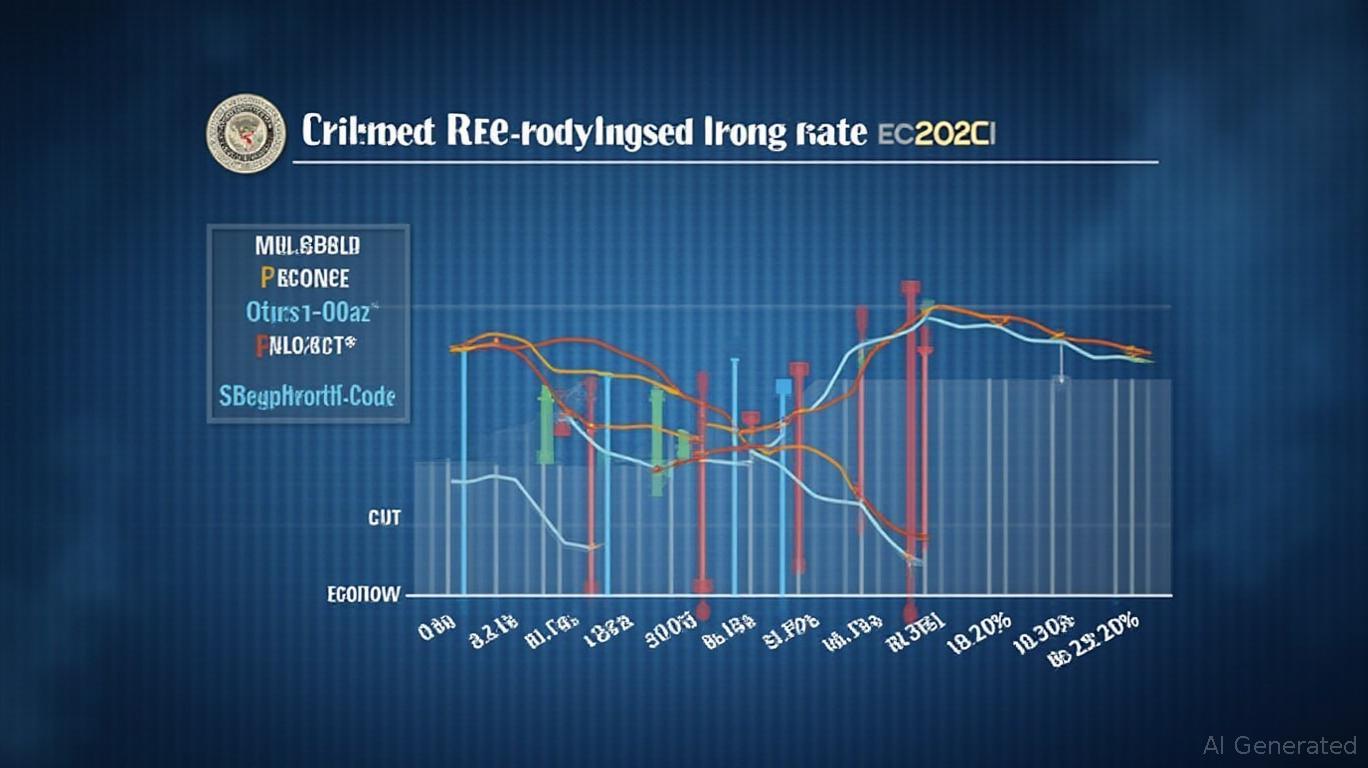Navigating the Fed's Dovish Shift: Positioning Portfolios for 2025 Rate Cuts
The Federal Reserve's June 2025 decision to maintain the federal funds rate at 4.25%–4.5% marked a pivotal moment in monetary policy, signaling a cautious pivot toward a more accommodative stance. While the Fed paused further hikes, its projections for gradual rate cuts—projected to lower the funds rate to 3.9% by year-end—hint at a strategic recalibration. For investors, this creates a critical window to reposition portfolios ahead of anticipated easing. Below, we dissect the Fed's policy trajectory, its implications for asset classes, and actionable strategies to capitalize on the shift.
The Fed's Dovish Pivot: Context and Projections

Despite holding rates steady in June, the Fed's Summary of Economic Projections (SEP) revealed a dovish undertone. Key takeaways:
- GDP Growth: Median projections for 2025 GDP growth were trimmed to 1.4%, reflecting softness in consumer spending and trade tensions.
- Inflation: PCE inflation is expected to decline from 3.0% in 2025 to 2.1% by 2027, aligning with the 2% target.
- Rate Path: The median forecast envisions two rate cuts in 2025, with the funds rate falling to 3.9% by year-end and further declines in subsequent years.
This cautious approach reflects the Fed's balancing act: it seeks to avoid stifling economic growth while ensuring inflationary pressures subside. The “wait-and-see” stance also acknowledges elevated geopolitical risks (e.g., Middle East tensions) and the lagged impact of prior rate hikes.
Equity Markets: Favoring Rate-Sensitive Sectors
Equities broadly benefit from declining rates, as lower borrowing costs boost corporate earnings and discount valuations. Tech and consumer discretionary sectors, which are highly sensitive to interest rates, present compelling opportunities:
- Technology (XLK):
- Why? Tech firms with long-duration cash flows (e.g., cloud infrastructure, AI) thrive in low-rate environments.
Action: Overweight positions in companies with strong balance sheets and recurring revenue models.
Consumer Discretionary (XLY):
- Why? Lower rates stimulate borrowing for big-ticket purchases (e.g., autos, appliances).
Action: Focus on companies with exposure to discretionary spending, such as e-commerce platforms and luxury goods.
Utilities (XLU):
- Why? Defensive utilities offer stable dividends, which become more attractive as bond yields decline.
- Caution: Avoid overpaying—valuations are already rich in some sectors.
Fixed Income: Navigating Duration and Liquidity
Bond investors face a nuanced landscape. While rate cuts may reduce yields, duration risk remains a concern given the Fed's prolonged tightening cycle. Strategies to consider:
- Short-Term Treasuries: Prioritize liquidity and safety with short-maturity bonds.
- High-Quality Corporate Debt: Look for issuers with strong credit profiles (e.g., BBB+ rated companies).
- Avoid Long-Duration Bonds: Wait for a clearer signal of sustained easing before extending maturities.
Sector-Specific Risks and Opportunities
- Financials (XLF): Banks and insurers may see margin pressure as rates fall, though a weaker dollar could benefit multinational firms.
- Energy: Geopolitical risks (e.g., Middle East conflicts) may keep oil prices elevated, supporting energy equities.
- Real Estate (IYR): Lower rates could revive housing demand, but regional disparities (e.g., urban vs. suburban markets) warrant selective picks.
Risks to the Outlook
- Inflation Persistence: If PCE inflation remains above 3%, the Fed may delay cuts, punishing rate-sensitive stocks.
- Geopolitical Shock: Escalating Middle East tensions or trade disputes could disrupt global supply chains.
- Market Overoptimism: Equity valuations may already price in rate cuts, leaving little room for error.
Actionable Investment Advice
- Rebalance Equities: Shift toward tech, consumer discretionary, and utilities, while trimming rate-sensitive financials.
- Ladder Bond Maturities: Focus on 1–3 year Treasuries to balance yield and liquidity.
- Hedge with Cash: Maintain 10–15% in cash or short-term instruments to capitalize on dips.
- Monitor Inflation Data: Closely track core PCE and unemployment claims—early signs of easing could accelerate Fed action.
Conclusion
The Fed's dovish trajectory in 2025 presents a nuanced but opportunistic landscape. While the June hold underscores caution, the projected rate cuts align with a soft landing scenario. Investors should prioritize sectors benefiting from lower rates while hedging against inflation and geopolitical risks. As the Fed navigates this delicate balancing act, agility and discipline will be key to maximizing returns.
Final Note: Always consider your risk tolerance and consult a financial advisor before making investment decisions.

Comments
No comments yet